Are Iranian Schoolgirls Being Deliberately Poisoned?
Across Iran, thousands of female students have been hospitalized with mysterious illnesses.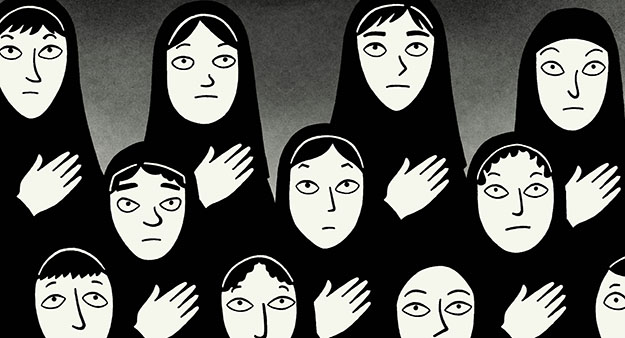 Illustration by Marjane Satrapi from her graphic novel, "Persepolis" / National Coalition Against Censorship
Illustration by Marjane Satrapi from her graphic novel, "Persepolis" / National Coalition Against Censorship
At the Oscars ceremony this past weekend, the dress worn by Iranian actress Shohreh Aghdashloo drew attention for reasons beyond its elegance. Custom-made by Christian Siriano, the voluminous skirt was stitched with the words “Woman Life Freedom” and the names of Mahsa Amini — who was murdered by Iran’s morality police in September — and two young Iranian women who were killed by security forces in the subsequent protests. Aghdashloo told reporters that she wanted to place “the slogan of Iran’s freedom fighters” before the global media.
Aghdashloo’s tribute to Iran’s protestors was apt. She used her body to bring attention to a movement calling for the freedom and autonomy of women’s bodies. But a high-fashion, high-profile statement will not by itself stop the Islamic Republic of Iran’s continued war against women and their bodies. Indeed, over the past two weeks, allegations have emerged across Iran of poison gas attacks on girls’ schools across the country. The first case was reported on Nov. 30 in the conservative city of Qom, the home of many religious seminaries, when school girls reported the presence of a noxious gas followed by dizziness, nausea, headache, coughing, breathing difficulties, heart palpitations and the loss of mobility.
Since then, there have been consistent reports of schoolgirls falling ill with mysterious symptoms in up to 300 schools across 25 provinces, according to local media reports, including in the capital Tehran with at least one student dead — an 11-year-old girl called Fatemeh Razaei — and some 5,000-7,000 hospitalized. In the past two weeks, in scenes that looked straight out of a dystopian science-fiction film, mothers and girls protesting outside affected schools were beaten and physically stopped from speaking, while hundreds of schools across the country reported poisonings in the first few days of March. Scenes of panic, meanwhile, have broken out in towns throughout Kurdistan — where protests and the crackdown have been most intense — as dozens of schoolgirls have been sent to hospital to be treated for poisoning, only to be barred from entering or arrested by regime forces when they get there.
The first case was reported on Nov. 30 in the conservative city of Qom, the home of many religious seminaries, when school girls reported the presence of a noxious gas followed by dizziness, nausea, headache, coughing, breathing difficulties, heart palpitations and the loss of mobility.
The women-led protests that broke out in Iran last September following the death of young Kurdish-Iranian woman Mahsa Jina Amini is overwhelmingly fronted by Iran’s Gen Z; the average age of those arrested is 15. The uprising has outgrown initial demands to end mandatory dress codes for women, and swelled into a national movement for basic human rights, equality and bodily autonomy. Since the beginning, schoolgirls have been active in the protests and the resulting violent crackdown that has left some estimated 600 people dead, 20,000 arrested and four people executed. (As of this writing, another 18 people remain under threat of execution). They have entered the streets, torn off their headscarves, ripped down pictures of Supreme Leader Ayatollah Khameini and even chased regime officials out of their schools. Alongside university campuses, high schools have become theaters of protest and resistance, and many claim that these mysterious “poisonings” as the Supreme Leader called them, are the latest attack from security forces against the population, a terror tactic meant to intimidate schoolgirls and, ultimately, restrict access to female education by forcing the closure of schools.
These reports follow other allegations that the regime is systematically torturing and raping the detained. Recent reports have emerged of security officials entering schools in several provinces to show students graphic videos of rape — including scenes of animals having sex with humans — to scare school children and deter them from joining the protests. The regime’s lack of response to the poisonings and their mixed messages — ranging from admitting that there was deliberate poisoning to claiming that students were suffering from “stress” and “hysteria” triggered by misinformation spread by foreign powers — has angered parents, human rights organizations and activists inside and outside Iran, who on March 8, called for wide-ranging rallies in and outside Iran for International Women’s Day. Iran’s major teacher’s trade union, the Coordination Council for Teachers’ Organization called for peaceful protests in front of all cities’ Parliament and Education Departments on March 7 and 8. Angry teachers and parents have staged protests in a number of cities in the past few days, such as Tehran,Karaj,Mashhad, Gilan and Saqqez. Security forces dispersed the peaceful rallies by using water cannons and tear gas.
Since the beginning, schoolgirls have been active in the protests and the resulting violent crackdown that has left some estimated 600 people dead, 20,000 arrested and four people executed.
The state has only recently acknowledged the allegations. On Feb. 5, after three months of reported poisonings, the Education Department of Qom province stated that 18 female students from the same school were sent to hospital due to “stress probably caused by poisoning.” The next day, Majid Mohebi, vice president of Qom University of Medical Sciences, announced that 61 students from eight schools in the city were taken to the emergency services complaining of respiratory symptoms. Mojtaba Zolnoori, a member of parliament from Qom, implied that poisonings were behind the wave of illnesses, calling it an ‘unnatural’ phenomenon.
Mass outcry from parents, teachers and human rights groups forced president Raisi to form an official investigation at the beginning of March. Led by Interior Minister Ahmad Vahidi Vahidi — a general of the Iranian Revolutionary Guard Corps and former commander of its foreign missions arm, the Quds Force — Vahidi reported on March 1 that 90% of the symptoms were caused by “stress,” further gaslighting the country and belying images circulated on social media of girls in hospital beds struggling to breathe. President Raisi himself blamed “the enemy” that, according to regime propaganda, “has now launched a media campaign to create stress and anxiety among students and their parents so that it would lead to unrest.” This explanation has failed to convince parents or teachers, who criticize the regime for not moving faster to open an investigation and for not being transparent about those investigations.
For example, on Feb. 26, Deputy Health Minister Younes Panahi seemed to confirm that the poisonings were deliberate, stating, “After several students were poisoned at Qom’s schools, it became clear that certain individuals want all schools, and especially girls’ schools, to be closed.”
The next day he retracted his comments, saying he was misquoted.
Iran’s Health Ministry conceded on March 7 that around 10% of the affected students had been exposed to an unknown substance, without elaborating further. The ministry attributed the vast majority of claimed cases to “anxiety” — a claim that has been the standard response from officials in all the provinces where these illnesses have been reported. Finally, last week, the Supreme Leader himself acknowledged the wave of schoolgirls getting sick last week, saying: “If the poisoning of students is proven, those behind this crime should be sentenced to [death].”
Since Khamenei’s statement last week, a number of arrests have been made in five provinces in connection with the incidents. In a statement made by police spokesperson General Saeed Montazerolmehdi, which was reported in Iranian media, some 110 people have now been arrested, but there are few other details forthcoming from the Iranian authorities other than further attempts to discredit the schoolgirls with the statement that police had confiscated thousands of stink bomb toys, indicating that some of the alleged attacks might have been mere pranks.
Iran’s Health Ministry conceded on March 7 that around 10% of the affected students had been exposed to an unknown substance, without elaborating further.
Whoever is behind the poison attacks, it is clear that the Iranian people have lost all faith in regime officials and the state agencies. Protests in front of schools, dorms and universities are ongoing, with schoolboys standing in solidarity holding signs saying, “Attacks on girls are attacks on all of us.” Recently, male employees at the Iranian Food and Drug Administration have taken to wearing thick black hijabs to protest the agency’s directive that female pharmacists wear strict black hijab in the workplace. Human rights activist Narges Mohammadi, who has been nominated for this year’s Nobel Peace Prize, released a statement on the eve of International Women’s Day, declaring, “We cannot and should not be silent about the widespread and linked poisoning of students, especially schoolgirls, during the past week. This hateful and inhumane act has not been committed only to repress protests. The intensity of this cruelty and its inhumanity has a more important message for the international community.”
And yet, the international community remains confused in its response. While Amnesty International has condemned the poisonings and asked for action from Iranian authorities, other international agencies, and the international community in general, have been silent. Just last week, the foreign minister of the Islamic Republic of Iran addressed the UN Human Rights Council in Geneva and was welcomed by Belgian foreign minister Hadja Lahbib who, just a few months ago at the start of the protests, publicly cut her hair in solidarity with Iranian women. In Washington, the U.S. Treasury Department marked International Women’s Day by announcing a 10th round of sanctions on the Islamic Republic, targeting two individuals and some companies for “enabling the violent repression by the Iranian Law Enforcement Forces of peaceful protestors, including many women and girls.” But over 40 years of sanctions from the U.S. has only served to enrich the ruling elite richer, while deepening the suffering of ordinary people lacking access to many goods and medicines.
Notwithstanding regime obfuscation and international wavering, Iran’s women continue to protest for equality and their rights in imaginative ways. A recent video of five girls dancing without hijabs in a choreographed routine in Tehran went viral. The group, now known as the The Ekbatan Five, inspired hundreds of other dancing videos, including one of a girl dancing with no hijab in front of the notorious Evin prison where political prisoners are held. For these simple acts of defiance, the women and girls making videos are risking their freedom and their lives. In response, the regime has stepped up its surveillance and arrests. The Ekbatan Five, as they have become known, are in hiding. They and the school girls of Iran are the new symbols of an uprising that refuses to back down and shows little sign of running out of steam.
Your support matters…Independent journalism is under threat and overshadowed by heavily funded mainstream media.
You can help level the playing field. Become a member.
Your tax-deductible contribution keeps us digging beneath the headlines to give you thought-provoking, investigative reporting and analysis that unearths what's really happening- without compromise.
Give today to support our courageous, independent journalists.


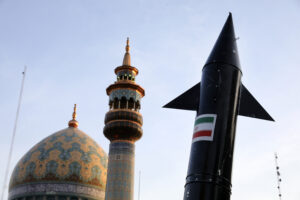
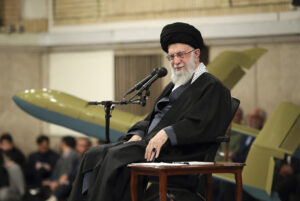
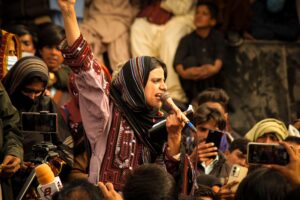

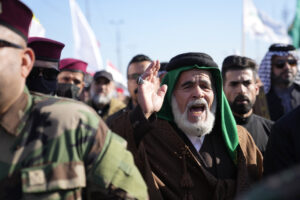


You need to be a supporter to comment.
There are currently no responses to this article.
Be the first to respond.